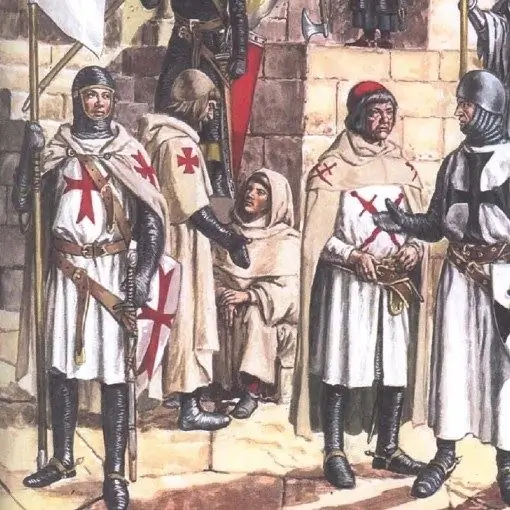- Author Antonio Harrison [email protected].
- Public 2023-12-16 07:44.
- Last modified 2025-01-22 21:44.
The Livonian Order was an autonomous branch of the Teutonic Order and one of the members of the Livonian Confederation from 1435 to 1561. The full name of the Order is the Brotherhood of the Knights of Christ of Livonia. The Order was ruled by the Master and engaged in endless wars.

The Livonian Order was a German military-political organization and was based in the lands of Livonia - where Latvia and Estonia are now located.
Formation of the Order
The history of the existence of the Livonian Order began in 1217, when the King of Denmark Valdemar II founded the Revel fortress on the lands of Estland (now the city of Tallinn is located here). After 13 years, part of the Estonian lands was transferred to the German Order of the Swordsmen, founded in 1202 in Riga. In the territory that fell under the rule of the Swordsmen, the Fogts and Commanders ruled. The conquered lands were distributed to the Catholic clergy and knights of the Order. The burden of keeping the knights lay with the local population. Later, the Order began to be called Livonian, in honor of the Livs - the Baltic-Finnish people who lived in this territory. Formally, the Livonian Order was subordinate to the German emperor and the pope.
Structure and management
The people who made up the Order were divided into three large groups. The serving brothers were artisans and squires, the priest brothers were the clergy, and the knight brothers were warriors. The knight of the Livonian Order could be distinguished by a white robe, on which a sword and a red cross were depicted.
At the head of the Order was the Master (landmaster), by analogy with the Teutonic Order, which was ruled by the Grand Master. The head of the Order was elected by the knight brothers and performed supervisory functions. His word was taken as an order. The Teutonic Grand Master himself never came to Livonia, not wanting to violate local autonomy. He preferred to send his ambassadors there on occasion. The first Master of the Lithuanian Order was Hermann von Balk, who by that time already had the title of Master of the Teutonic Order. Gotthard Kettler became the last landmaster of the Livonian Order. In 1559, he concluded a treaty with the Polish king and transferred the territories that belonged to the Order to the Lithuanian and Polish protectorates.
Everyday life
The daily life of the Order consisted of incessant wars and battles. The Livonian knights fought against the Novgorodians, the Pskovites, the Moscow principality. The peak of tension in relations between the Order and Russia reached in 1557, when Tsar Ivan IV did not receive the Livonian ambassadors. Four years later, the Order suffered a crushing defeat in a battle with Russian troops and was eliminated.






